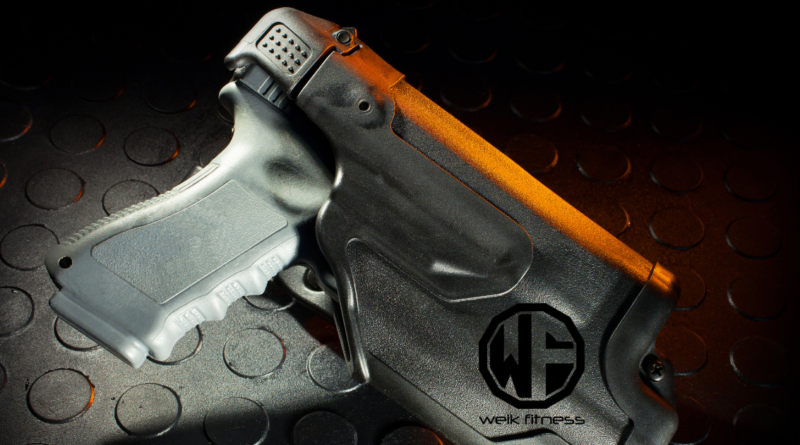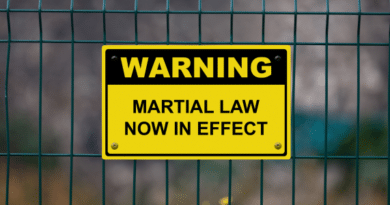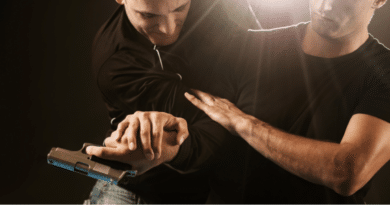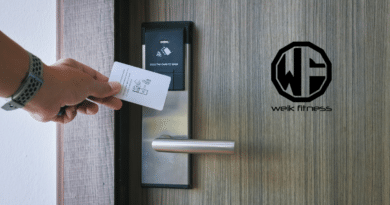Do You REALLY Need an OWB Duty Retention Holster?
Finding the perfect method to secure your pistol on your belt can be a challenge. Naturally, you may be concerned about your firearm’s stability throughout your day, and the last thing you want to happen is for it to slide around and fall out. This is when a retention holster shows its value.
Granted, more than likely, you’re not walking around open carrying at the three o’clock position like law enforcement, but if you’re doing any sort of tactical training that involves movement or grappling, you need your firearm to stay in the holster no matter what (especially considering the last thing you want to happen is for it to fall out and be used against you in a real-life scenario).
All that being said, after an extensive amount of research, I found that Duty Rated Level III+ Retention Holsters provide reassurance with their Automatic Locking System (ALS®) and Self Locking System (SLS™). These advanced features make sure your pistol stays secure until you decide to draw.
In this article, we will dive deeper into the various benefits of a retention holster, clarify how selecting among levels like 2 or 3 can fulfill diverse requirements, from daily carry to tactical situations. I’ll also provide you with my personal experience with a retention holster and whether I recommend it or not.
Table of contents
Key Takeaways
- Retention holsters (sometimes referred to as duty holsters) keep guns safe and stop unwanted people from taking them. They are good for moving around without losing your gun.
- There are many types of locks on these holsters, like friction, straps, or special systems made by companies like Safariland.
- People who use their guns every day might pick a Level 2 holster because it’s secure but still easy to draw the gun quickly. Police or military might need Level 3 for more safety.
- When picking a holster, think about what you will do with it. Everyday carry might be fine with fewer locks, but dangerous jobs (police, military, security guard, etc.) need more steps to draw the gun safely.
- Training is key no matter which holster you choose. You must practice drawing your gun well and quickly when needed.
- A retention holster is ideal as an OWB holster and is not made for concealed carry.
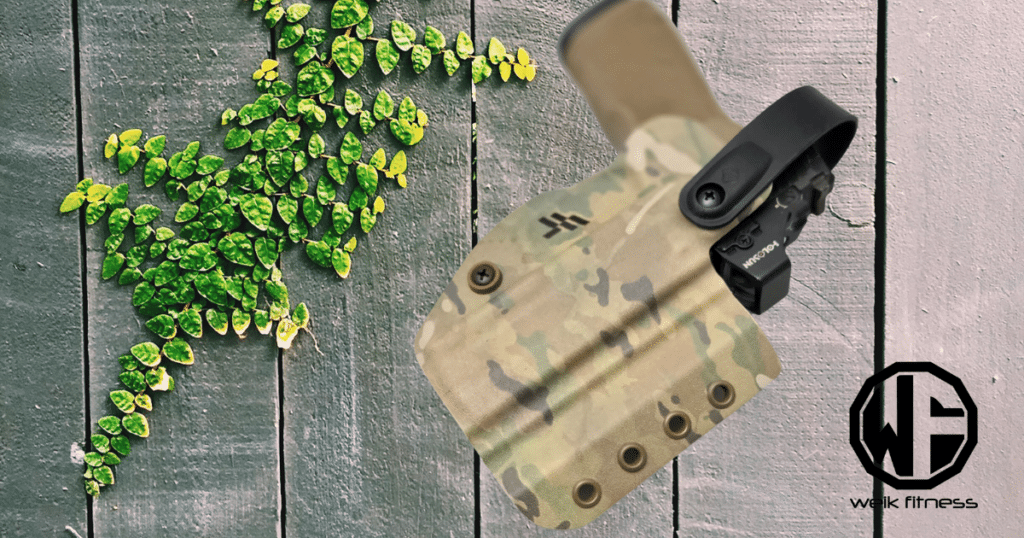
Importance of Holster Retention
Retention in holsters is crucial for keeping firearms secure and preventing unauthorized access. It ensures that the weapon stays in place during movement, providing a reliable safeguard against accidental dislodging or attempts to grab it.
Different retention mechanisms cater to various needs, offering flexibility and security in different situations.
Features and Types of Retention Mechanisms
I always ensure my equipment matches my needs, particularly in relation to holsters. Let’s discuss the different methods holsters can utilize to secure your firearm, ensuring it stays stable until you require it.
- Friction or Passive Retention: This type is the most basic. The holster exerts pressure on the gun to maintain its position. A screw often allows you to adjust this to your preferred tightness.
- Strap or Thumb Break: A timeless choice for many, including those in law enforcement and military professions. It features a strap that extends over the back of the handgun, enabling you to snap or disengage with your thumb while drawing.
- Hood Guard: The guard shields against potential attempts to snatch your gun from behind. To draw, apply downward or forward pressure on the hood.
- ALS® (Automatic Locking System): Safariland truly innovated with this one. It autonomously secures the gun once holstered. A simple thumb motion enables you to deactivate it when drawing.
- SLS (Self Locking System): Another Safariland invention, using a rotating hood system. It stands out because a twist action is required to release it, adding an extra dimension of safety.
- Level II Retention™: This type demands two actions to unlock your firearm. It merges functions like the ALS® and possibly a thumb break for added safety.
- Level III Retention™: The stakes rise here with three required movements before you can extract your firearm — commonly used by officers in hazardous situations due to its high level of security.
- Grip Lock System: Less common but intriguing, it is based on a mechanism that secures onto the grip of your sidearm and disengages when a certain button is pressed by the shooter’s middle finger.

The choice of these mechanisms depends on your activity — open carrying around town doesn’t necessitate as much retention as, for instance, being on patrol or in populated areas where someone might unintentionally attempt to take your weapon (that said, around down you want to be discrete with an IWB holster).
In such situations, you should look for higher levels of security, such as Level III or even IV, provided by certain manufacturers for added peace of mind.
Situations Requiring High Retention
If you’re a police officer, you’ve probably seen and experienced why high retention is vital. The streets demand gear that won’t fail.
For example, during a chase or when wrestling with a suspect, you can’t afford to have your gun slip out. That can lead to your firearm being used against you.
That’s where Level 3 retention holsters step in. They use multiple devices like straps and hoods to keep handguns secure until deliberately released by the user.
Walking through crowded places calls for strong holster retention, too. You never know when someone might try to grab your gun.
Bill Rogers designed these levels of retention back in the early ’70s after testing how well holsters held up against grabs.
Only one made it as a Level III then, but today, we have many options that offer unmatched security without slowing down our draw speed.
Choosing the Right Retention Level for Duty Holsters
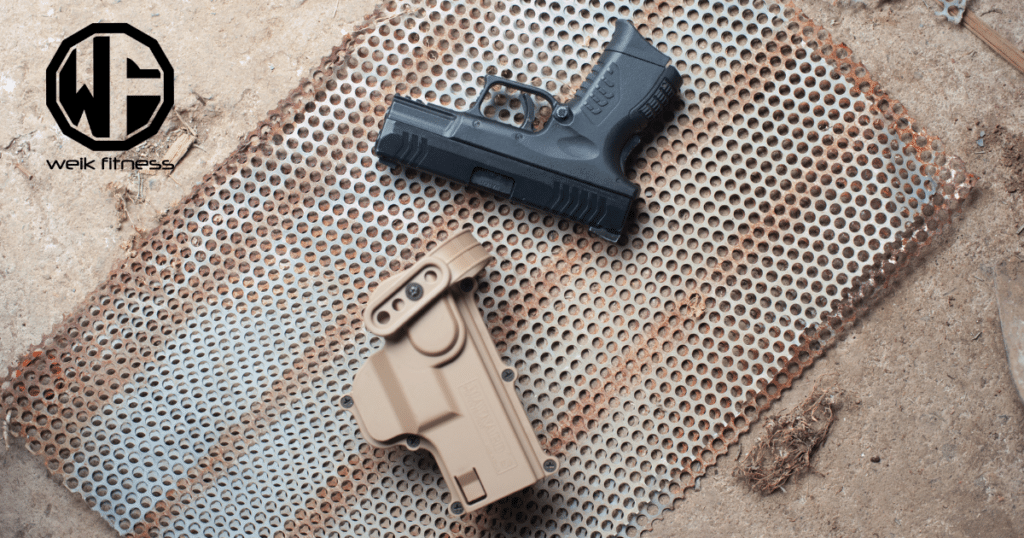
When selecting a retention level, consider the designated use and personal comfort. Evaluate different mechanisms, such as thumb breaks or hooded designs, to match your needs.
Simply going to the range is one, but if you’re doing any serious training where you’re moving or fighting, tension retention isn’t going to cut it. You need something that’s going to secure your firearm to you and only allow it to come out when you make that decision.
Level 2 vs. Level 3 Retention
I’ve spent a good amount of time comparing Level 2 and Level 3 retention holsters. My goal? To determine which one is better for self-defense and everyday carry in the sense something happened, and you need to be kitted up. It’s a question and scenario many of us in the self-defense and firearms community consider.
So, I’ll just clarify it for you.
| Feature | Level 2 Retention | Level 3 Retention |
|---|---|---|
| Number of Actions to Draw | Two | Three |
| Security | Enhanced | Highest |
| Best Use | Open Carry, Everyday Carry | Tactical, Law Enforcement |
| Ease of Access | Quick, with practice | Requires more practice |
From my experience, the choice between Level 2 and Level 3 retention isn’t just about numbers. It’s about how you plan to use your firearm. Do you carry every day in a variety of situations? Level 2 might be your best option. Its two actions to draw offers a good compromise between security and access. I’ve found it reliable for most situations where you might need quick access to your weapon.
On the other hand, Level 3 retention provides an additional layer of security. It needs three actions to draw, which can be a bit slower. However, for professions where losing your firearm is unthinkable, Level 3 is essential.
I remember the first time I used a Level 3 holster. I was trying a buddy’s new setup, and it seemed awkward at first. But after enough repetition, it felt natural. The increased security was reassuring, helping me feel confident that my firearm was secure.
So, what’s the final answer here? Well, it’s an answer everyone hates… “It depends.”
It depends on your needs and how much effort you’re willing to put into practice. Both Level 2 and Level 3 retention holsters serve their purposes. Your task is to choose the one that suits your lifestyle and security requirements.
And it’s crucial, whichever you select, to engage in consistent practice to ensure you can draw effectively and securely when necessary.
Practical Considerations for Retention Holsters
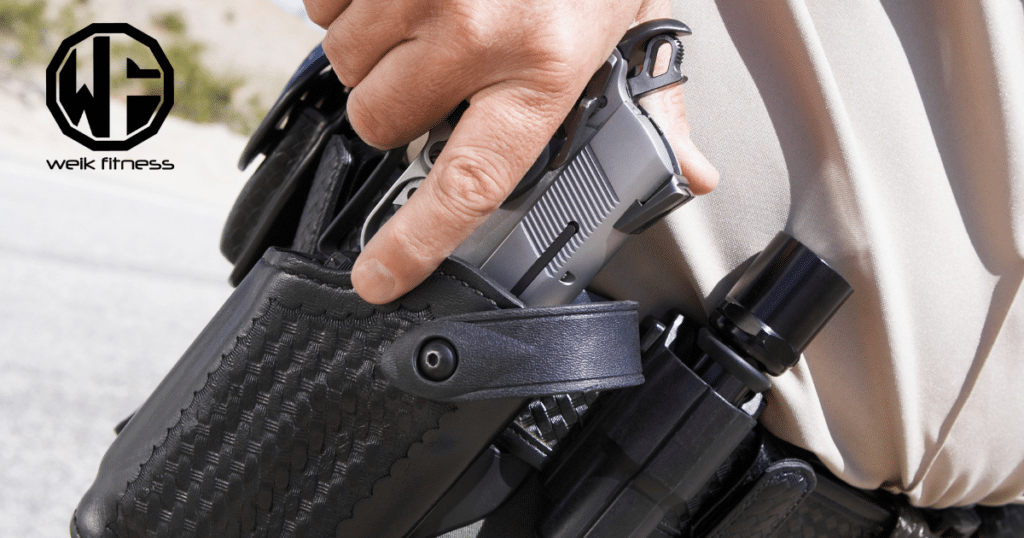
When choosing a retention holster, consider the specific needs of your everyday carry. Let’s look at some of the vital considerations.
Everyday Carry (EDC) vs Tactical Use
Everyday carry and tactical use require different holster retention mechanisms. Below is a detailed outline to help you understand the distinction:
- Everyday Carry
- When carrying for daily self-defense, a level 1 retention holster may be suitable. This offers quick and easy access to your firearm, which is crucial in potentially dangerous urban environments.
- Level 1 holsters typically rely on friction or tension to secure the weapon in place, allowing for a swift draw in situations where quick response may be vital.
- Tactical Use
- In tactical scenarios, such as law enforcement duty or military operations, higher levels of retention are essential to prevent unauthorized access to your weapon. This necessitates a level 2 or level 3 retention system.
- Level 2 holsters incorporate an additional locking mechanism that enhances security without compromising accessibility. They often involve thumb breaks or other active retention devices.
- Level 3 holsters go further by adding multiple independent retention systems, ensuring that the weapon stays securely in place even during physically demanding activities.
Keep in mind that choosing the appropriate holster and retention level depends on your specific needs and intended use.
For everyday carry, prioritize quick access; for tactical use, prioritize maximum security while balancing accessibility for rapid deployment.
What Gear and Retention Holster Do I Trust? (No… It’s Not Safariland)
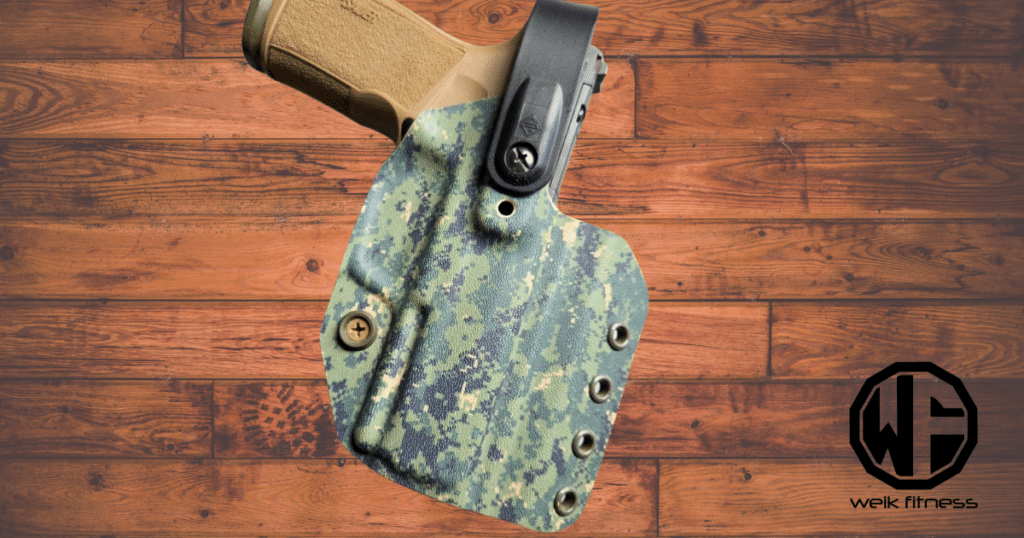
If you’re looking for an outside-the-waistband retention holster, check out First Wave Holsters. They have a Pantac retention holster that I believe is one of the best out there.
This holster company is not new, but it is a smaller, veteran-owned company that makes everything from adjustable retention concealed carry holsters to full-blown retention holsters for duty use.
I’ve had the First Wave Holsters Pantac for a little while now, and I’ve run it hard at the range and am working with it in dry fire practice at home. You can adjust the amount of retention, and it has a thumb paddle to break the retention hood and allow the firearm to come out of the holster.
The First Wave Holsters Pantac holster utilizes a level II retention that I’ve found to have great reliability without it getting hung up and failing to unlock when the paddle is depressed.
All that being said, whether you want a concealment holster for your EDC or a fast-draw retention holster, you can’t go wrong with First Wave Holsters.
I also have their universal magazine holster that I swap between Glock and Sig mags depending on what I’m carrying for the day and my needs, as well as their ShieldMaiden that I use in my Hill People Gear Fanny Pack.
The team over there are great guys, and Garry Marr is a solid dude who I’ve trained with several times. He’s the owner of Tremis Dynamics and (in my opinion) is one of the best firearms instructors out there.
A Retention Holster is Ideal for Those Who Use a Gun in a Professional Setting
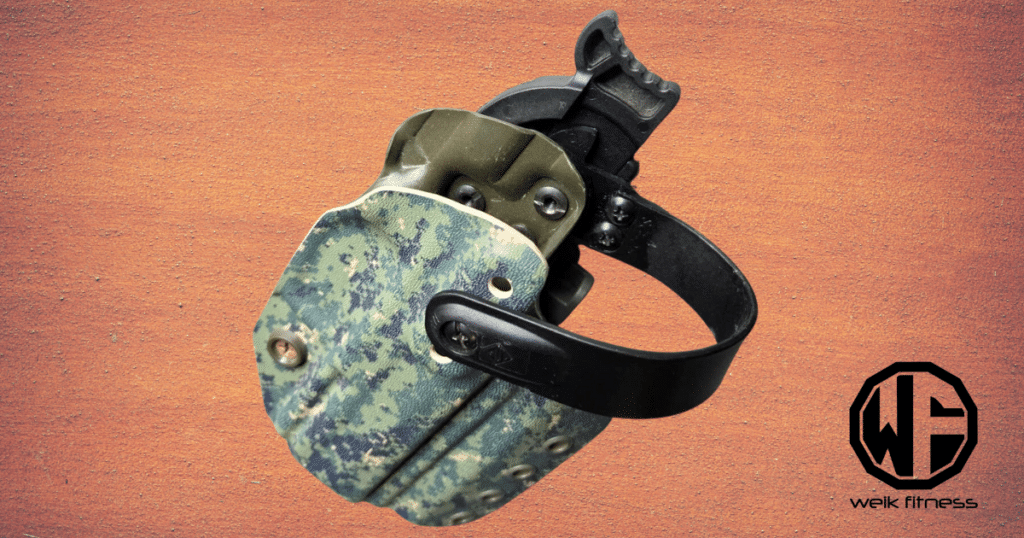
When choosing a retention holster, it’s crucial to consider the level of security and protection needed for your specific use. Understanding the different types of retention mechanisms and their applications can guide all of us toward making an informed decision.
Finding the right balance between ease of access and high retention is essential in everyday carry or tactical situations. With reliable options available from reputable companies like First Wave Holsters, there are customized solutions crafted to enhance your firearms-carrying experience.
So, consider these expert-crafted retention holsters for a secure and practical solution that meets your individual wants and needs.
As a side note to close out this article, if you want to support our website and are in need of any tactical gear (or any product for that matter), anything you purchase using our links below will provide us with a small commission. We don’t charge for our free content and our goal is to keep it that way. We don’t have a Patreon account to put things behind a paywall, nor do we sell pics of our feet on OnlyFans.
If you choose to use the links below and make a purchase (at no additional cost to you), we greatly appreciate your support as it helps us continue to publish free content (like this article) on our website:
- Optics Planet (use code SAS5 at checkout for 5% off)
- Amazon
We have also partnered with CCW Safe. It’s the concealed carry coverage that I personally have for myself and my family in the event we need to defend our lives. Feel free to use our CCW Safe link to sign up and get some coverage to protect yourself and your family.
Also if you have a product you would like us to check out and potentially review, please contact us and let’s discuss.


